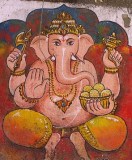Tomorrow is New Year’s Day, and I plan to Retreat.
I come from a long line of Retreaters, so a few excellent strategies were passed down in my genes. I’ve picked up a few more along the way. I tend to Retreat on a regular basis, whenever I have a sense that my life is running away without me or I need to re-charge my batteries.
To me, Retreating is about creating the right environment for deep nurturance, reflection, and vision. It is a liminal space set apart from the daily-ness of life in which to step back and get a different perspective on life. It’s not a coincidence that the word “Retreat” is used – it usually involves stepping BACK from something, from the “to do” list, from your family members, from your usual routine.
I find it particularly useful to Retreat at times of transition: a birthday, the dawn of the school year, after completing a big work project – or indeed, at the New Year. It doesn’t have to be on New Year’s Day, it can be just as fulfilling two days later, or the following weekend, or whenever you may have time. It doesn’t require a great deal of time either, but it does take some– and the more time you can wrangle, the juicier.
If you would like to join me tomorrow or in the days ahead, here are some jumping off points:
1) Decide on your chunk of time and set it aside – an hour, the afternoon, a whole weekend, even thirty minutes can do in a pinch. The key is that you set it ASIDE and get support from any necessary folks in the vicinity so you don’t get interrupted. “No interruptions” is absolutely vital. Turn off the cell phone.
2) Prepare your Retreat nest. Decide on your location and clear the clutter – you don’t have to clean out the closet, but do remove the piles on the surface. An empty and peaceful visual field invites in clarity and new thoughts.
3) Gather your Retreat equipment. Here are my requirements:
- A canvas of some kind – a journal, a sketchbook, collage materials, something to capture thoughts and allow creative musings to flow. Find some colored pencils, finger paints, a favorite pen.
- Soothing sustenance – warm chai, rich hot chocolate, herbal tea… or my choice for tomorrow: tulsi tea, a remarkable tonic herb known to support the body during cold and flu season (Organic India makes a fabulous selection often found at grocery stores or natural markets).
- A cocoon – a cuddly blanket, warm slippers, the perfect sunny spot by the window (our dog always knows the best spots in the house).
- A piece of nature – either to walk in, or in colder climes at least a vista to gaze at. Nature is the best source of restoration, a powerful reminder of our natural rhythms and the most efficient, effective guide to find balance if it’s been misplaced.
These are my bare minimum needs to Retreat, but feel free to add your own. I prefer silence for contemplation but maybe you need some music. Get creative in building your walls to hold the distractions out and the sweet stuff in.
4) Decide what to do. For me, the three critical components of Retreating are nurturance, reflection, and vision. The most compelling ideas for creating those components will come from within you. What seems absolutely nourishing and indulgent, but also special, a step away from “normal” life? What do you want to focus on? Is there something specific you are aiming for? Here’s my plan for tomorrow:
– Review the past year. How have I changed? What can I celebrate from this past year? What did I learn? What am I giving up going forward?
– Choose a one-word theme for the coming year. I’ve always loved the soul-searching and optimistic sense of frontier I find in developing New Year’s resolutions (although my resolutions have changed form over the years). Early on, I tended to fall into the trap of listing ways to “improve” myself, missing the truth that we are always exactly where we are supposed to be in our evolution. This year, I’ve decided to focus my vision by choosing one word that calls forward my fullest self, a word rich enough to be provocative for a full year. If that sounds intriguing, here are some ideas to get you going: Serenity, Power, Integrity, Clarity, Confidence, Celebration, Depth, Truth, Non-violence, Contentment, Discipline…. My process for choosing one word will lie in writing and seeing what rises to the top. As in all travels, the journey is as important as finding the destination.
– Take a walk in nature. Let the mind wander as the feet do. Inevitably, the pace of my steps slows as my thoughts do. I am reminded that I’m home already.
The Art of Being
By Ann Coray
The fern in the rain breathes the silver message.
Stay, lie low. Play your dark reeds
and relearn the beauty of absorption.
There is nothing beyond the rotten log
covered with leaves and needles.
Forget the light emerging with its golden wick.
Raise your face to the water-laden frond.
A thousand blossoms will fall into your arms.
Happy New Year to you, my friend. May it be full of joy, love, compassion, vibrant health, unshakable trust – and whatever vision you call into being.
~ivy










































